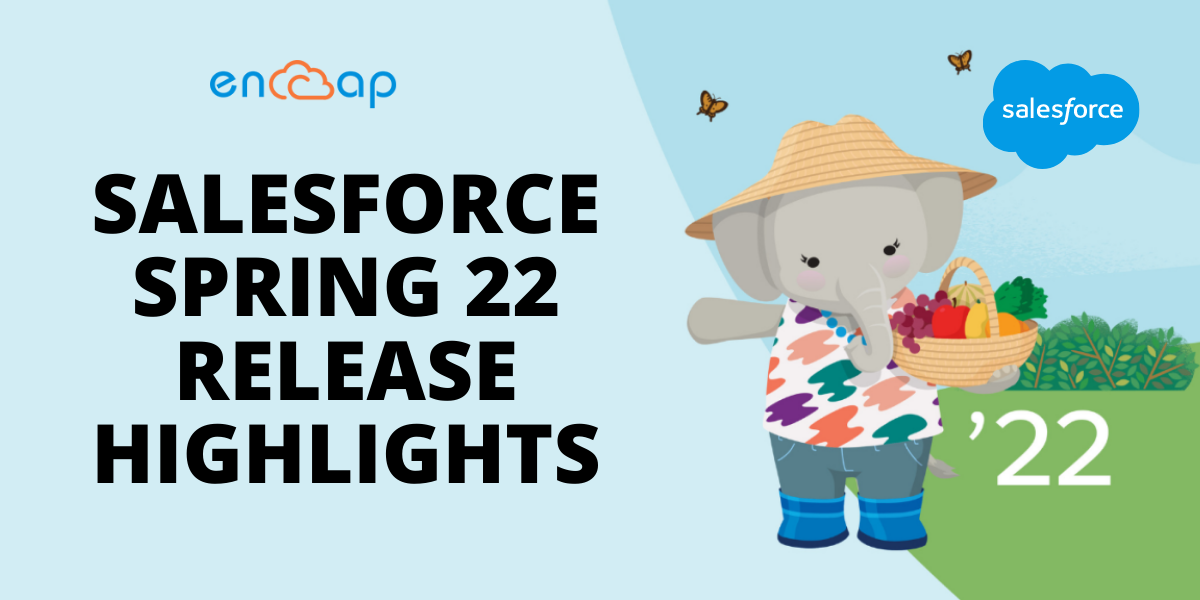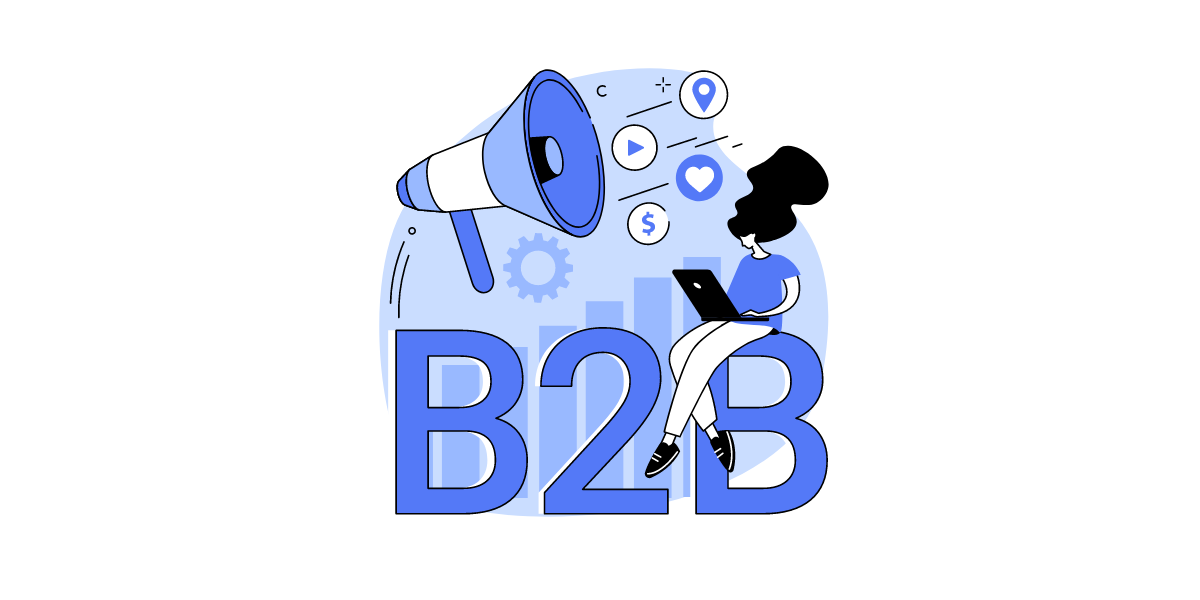Salesforce Spring 22 Release Highlights

Salesforce is here with its new Spring 22 Release that is packed with a bunch of new features and functionality to play around with. It also releases excitement both to the Admins and Developers in the backend along with the users who get to enjoy UI improvements on the frontend.
In the new release of Salesforce, multiple highly anticipated enhancements are slated to allow users so that efficiency can be improved, automation can be increasingly powerful, and a lot more value can be extracted eventually. All in all, the new features come with many new benefits for the users.
Table of Contents
Salesforce Sprint 22 Release – An Overview
Salesforce is also infusing world-class analytics from Tableau and Einstein directly into the flow of work. The revenue intelligence equips sales leaders with actionable intelligence all through customer touchpoints from setting forecasts, closing deals, and building pipelines.
Another important feature that is found in the Spring 22 Release in the Slack Huddles is an always available and audio first way of connecting with colleagues, customers, and other partners in real-time. The huddles recreate spontaneous conversations from the office while also reducing any fatigue from back to back video calls.
In the new release, an orchestrator will be available to customers which is meant to allow the customers to automate and optimize complex and multi-user business processes. This involves both the internal and external users with minimal to no code.
Another newly released powerful tool for automation is the Business Rules Engine for Public Sector empowers anyone including the program managers. It helps in building, testing, and executing rules with a drag and drop and no-code interface.
Let’s see some exciting highlights from the Salesforce Spring 22 Release:
1. Knowledge Search Filters
Anytime when a user applies knowledge filters from the global search box and the knowledge sidebar, the filters persist until the user stays in the same browser tab and session. These filters also get synchronized between the search box and the sidebar.
In case the user refreshes the browser, opens a new browser tab, or even ends the session, the search resets the filters to the default settings. For trying the Einstein Search for Knowledge Pilot, you can enter “Einstein Search” in the Quick Find Box and then choose Settings. In the pilot features box, you can then choose Einstein Search for Knowledge Enhancements.
2. Revenue Intelligence
The tools can definitely help in generating a lot more revenue and building a stronger pipeline. One of the best examples of this can be Revenue Insight which is also useful in improving the forecast accuracy.
This way, three new kinds of dashboards can become available easily including “Overview”, “Team Performance”, and “Sales Performance.” Other than this, Tableau CRM dashboards and analytics were also tied together with Pipeline Inspection for allowing users to see the changes in the pipeline from the Flow tab.
The revenue intelligence includes Einstein Forecasting, Einstein Activity, and more. There are AI, customer engagement, and forecasting features too. The best thing is that all these features are available at a reasonable cost.
3. Platform Flow Orchestrator
Coming out of the beta and getting empowered with an added functionality, the flow orchestrator gives admins an improved ability to build and even coordinate difficult processes that include many people over stages with multiple flows.
Some of the prominent functions that this tool is capable of offering include orchestrating multi user processes. Without the use of any code, you can easily combine new and present processes in just a single interface. The steps allow you to define the flows to add and where including the assignment of users for each step and where the flow appears for them. The stage also allows you to group steps together while using decision elements for more complex logic.
You can customize entry and exit conditions with evaluation flows. This helps in defining custom criteria for stage exit conditions and step entry and exit conditions as well. Interactive steps can be assigned to the groups or queues. Rather than assigning an interactive step to a person, you can assign it to some users and avoid process problems.
The background steps allow the users to call auto launched flows and run without any user interaction. When an auto-launched flow is called in the background and contains external callouts, one can mark the step that must be processed asynchronously to prevent orchestration errors.
4. Collaborative Forecast Enhancements
Collaborative forecasts do the job of allowing users to plan an end to end sales cycle while achieving realistic sales expectations in an organization.
In the latest release, there is a more efficient collaborative forecasts setup which has never been easier with an improved user interface. The new release includes a new look and configuration items brought together on just one page.
New columns can be added to the forecasting grid for calculating Gap to Quota and Pipeline Coverage to avoid time eating metric calculations. There is also an ability to see a week over week forecast change so that you can become more aware of when to adjust the forecasting strategies.
5. Workforce Engagement

The new offering for call centres features a suite of tools aimed at improving scheduling forecasts and agent happiness. Some of the key takeaways workforce analysts have been using intelligent forecasts for planning staffing needs around anticipated workload volumes on a horizon.
The budget and hiring capacity plans allow call centres to meet the customers’ SLAs through predictions made by Omni Channel plans. Similar to the forecast update, this can extend the capacity plan horizon from 12 to as many as 52 weeks.
Better schedules can be built by comparing the anticipated schedule adherence versus the actual adherence. The planners can now have access to a historical adherence dashboard and see statistics for schedule adherence, conformance, omnichannel status, and scheduled versus presence time.
The mass shift update tool enables planners to update shifts in bulk, defining the criteria to choose a batch of shifts and assign agents, updating the status and both. The agent’s work-life balance is necessary and not all the shifts are desirable. The scheduling rules that limit inconvenient shifts assigned to every agent allow planners to employ equitable shift scheduling.
6. DataWeave
The DataWeave in Apex improves native Apex data transformation support with the integration of Mulesoft’s DataWeave library into the Apex runtime. This makes data transformation easy to code, scalable, and a lot more efficient.
Using this feature, the Apex developers can focus a lot more on solving business problems and less on addressing the specifics of the file formats. There is less Apex specialization, deserialization, and format transformation code to be written and maintained. There is also lesser use of transaction heap and CPU limits and compatibility with a wide range of data formats.
7. Improved Landing Page Experience
The new release brings more options for configuring your landing page. You can customize Pardot form styles by dialing in the look of your pardot forms with the added ability to apply colours, fonts, margins, and much more.
The users now have the ability to define a custom redirect URL when a Pardot landing page gets removed from the internet. Improved landing pages now support script code in the header or footer of an individual landing page using tags such as <link>, <script>, and <style>.
There are new page layouts and breadcrumbs as well. The new prebuilt layouts and breadcrumbs for row editing create an enhanced landing page that can be lightning fast in the long run.
8. Archive Experience Cloud Sites and Maintenance
Retiring a website’s performance can be a challenging experience. You can be happy with the look of your new website but you may also want to keep the old one around for further reference. In this case, the option was to archive it unless it is a Salesforce Cloud Site.
In the new release, Salesforce has added a new button to the detail page of the site which makes the URL available to all users and rather displays a site under the maintenance page. In case you wish to bring it back, you can easily unarchive it. The users can easily archive over 100 sites and this does not count against the 100 active site limit.
9. B2B Promotions

There are many new types of commerce promotions that have been created for B2B stores allowing you to offer customer coupons, promotions per cart, and fixed discounts.
Any additional updates include the creation of various product discounts for the same promotion, the ability to see all promotions, and the Commerce Promotions API access through Apex.
10. Editing Multiple Fields
For everybody who has ever wanted to make inline edits to various fields and clean data from a Salesforce report without returning it each time your wish has been answered.
This is an enhancement to the inline edits on reports from the Summer release with an added functionality that enables you to make edits to a field with related fields on the same record.
When anyone does this, the related fields get marked as pending and are also updated with the new value on saving the edits. Various field inline editing for reports have also been entered and will be available to many users in the Salesforce Spring 22 release.
11. Bundle Service Appointments
An important enhancement is the ability to bundle short appointments at close locations which enables you to assign a service tech to the bundle for completing them in succession.
In addition, you can easily automate the creation of bundles and also save time on assigning many service appointments.
12. Browser Performance Improvements
Almost anyone who has dealt with a complex CPQ implementation understands how to run important operations.
The use of Web Components V1 tech allows Salesforce to become a lot less browser oriented. This is an update that was made available in the Summer release and is now being enforced in the Spring release as well.
13. Net Zero Cloud
The sustainability cloud is now Net Zero Cloud and it has now become a core Salesforce Application. It promises to help in collecting, categorizing, and analyzing energy usage.
Other than this, it also helps in collecting and categorizing greenhouse gas emissions data in the organization’s business activities. This further helps in gaining precise insights when it comes to carbon footprints while identifying areas of improvement.
Conclusion
With the enhancements and new features of the Salesforce Spring 22 release, the users can be promised continuous improvements. In case you wish to learn more about the updates you can also refer to the Salesforce release notes for improved clarity.
In case you need more support in the implementation and use of Salesforce then feel free to reach out to our Salesforce consultants who have a wide experience of helping users maximize the potential of Salesforce.
No comments